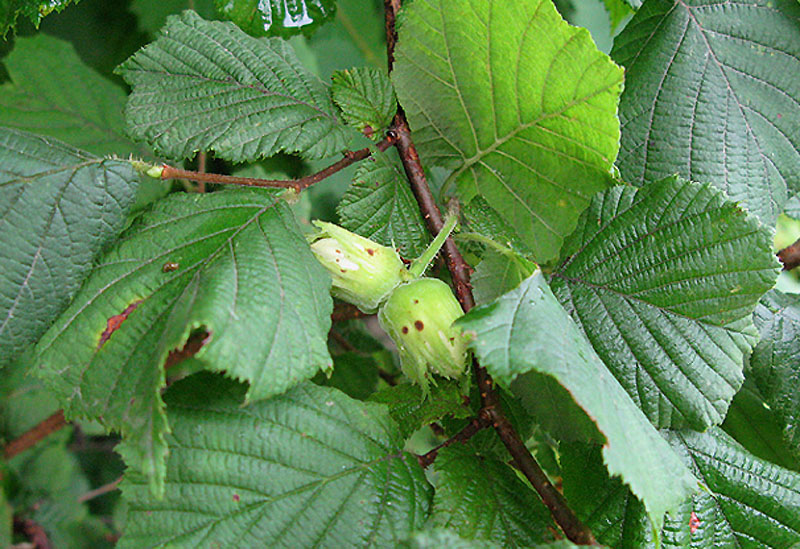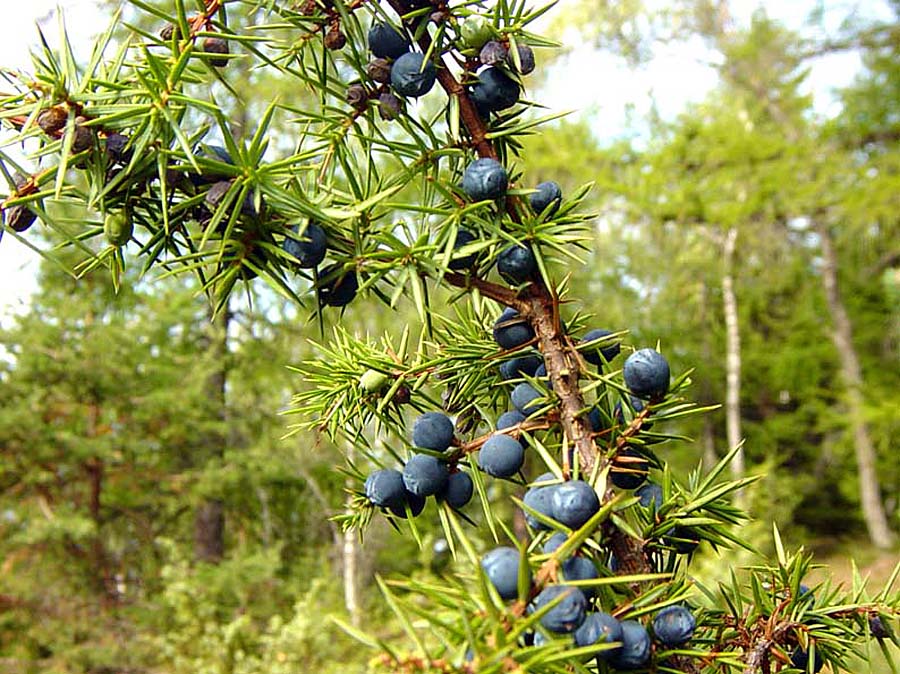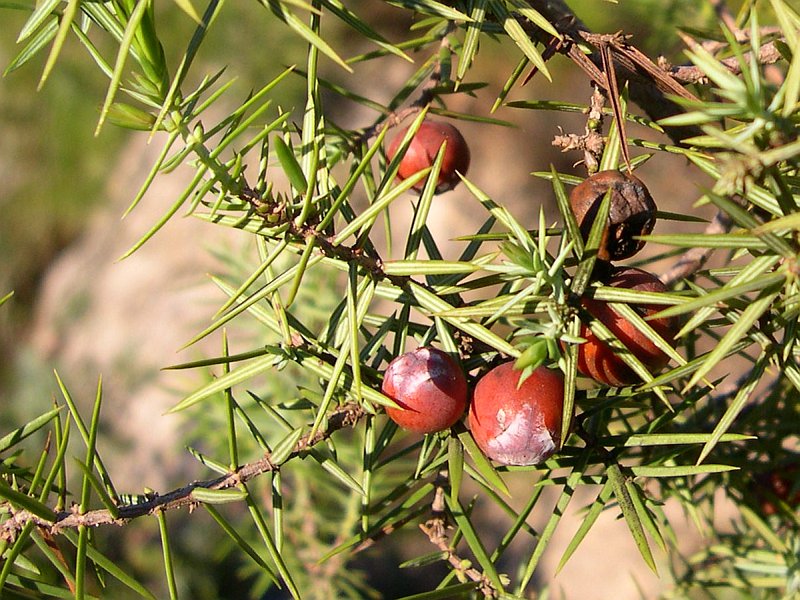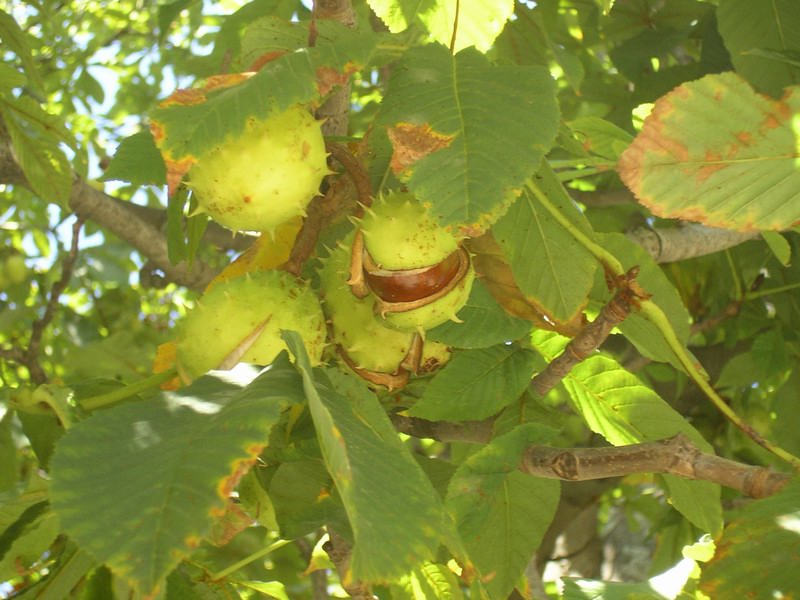“In autumn, the sun and all objects seem to be of a different color, the clouds of another shape, the air of another flavour. It seems absolutely as if all nature has a tone, a look, all its own, of this season, more distinct and marked than in other seasons. […]”. (Giacomo Leopardi, Zibaldone, LXXIV)
Giacomo Leopardi’s intellectual diary introduces us to the season when life slows down and becomes melancholy. After the bright light of summer with its dazzling greens, buzzing, and winged songs, October prepares us for the grays and silences of winter with carpets of dull brown and bright yellow leaves that gently cover the earth, allowing the seeds of nascent plants to begin germinating.
As in September, many species bear fruit this month: they help mammals and birds build up reserves to face the winter.

The carob tree (Ceratonia siliqua), also known as St. John’s bread, is one of the species that provides a high amount of calories to mammals fortunate enough to consume its fruit: carob beans. For this reason, it was also cultivated as a forage plant; its pods were fed to horses, mules, and ruminants.
The carob tree is a sturdy evergreen belonging to the Fabaceae family, capable of reaching majestic dimensions. It has a stocky, irregular trunk, from which alternate branches extend, anchored to the ground by a robust root system. Its dense foliage, like that of all Mediterranean plants, tends to “close” towards the ground to shade it and prevent the growth of weeds that could consume the scarce water in its habitat. Its persistent leaves, composed of an even number of dark green leaflets, are leathery and glossy, helping to prevent dehydration.
The tiny reddish-green flowers are mostly unisexual and usually found on separate plants; occasionally, bisexual flowers appear on male plants. Bees are attracted to them, and their nectar yields fragrant honey. Flowers bloom in autumn, and the large leathery fruits produced the following year by female plants are sweet legumes, up to 20 cm long. They start light green, then turn purplish-brown and black when ripe. The lenticular, hard, shiny seeds, each weighing uniformly about 1/5 of a gram, were historically used as a weight standard for metals and precious stones. In Arabic, they were called “qi-ra-t,” meaning twenty-fourth part, derived from the Greek “keration”; this is the origin of the term carat, which remains the unit of measurement for precious metals today.
The carob tree is a very long-lived species native to the southern basin of the eastern Mediterranean and Asia Minor. It has spread through cultivation to all the countries in the warmer Mediterranean zone within the evergreen sclerophyllous horizon.
For centuries, carob beans have fed the peoples of North Africa, and until the 1960s, Italy was one of the major carob-growing centers. Since then, production has undergone an inexorable decline. Significant carob orchards still exist in the Ragusa and Syracuse areas; in these areas, several industries are still active, transforming the sweet carob pulp into semi-finished products used in the confectionery and food industries, while the flour obtained from the seeds is also used as an ingredient in cosmetic creams.
In Sardinia, where numerous carob trees still grow, an ancient village in the province of Cagliari is called Siliqua, and on the Campeda plateau there is a region called Tilipera, the name given to the carob tree in Logudoro. In Gallipoli (LE), near the Pacciana farm, stands one of the oldest carob trees in Italy. In “The Monumental Trees of Salento” we read, “this arboreal patriarch may be more than 500 years old, with a circumference of just under 14 meters at the base…“

Another species we can call our “dear friend” is the Hazel (Corylus avellana), from the Betulaceae family. Unlike the previous species, it is deciduous. It grows in woodlands, clearings, and hedgerows on rich, cool soils, both siliceous and calcareous. Common in Italy but limited to humid, cool southern locations below 1,500 m, it is a shrub 3-4 meters tall, which in some cases can take the form of a tree up to 10 meters tall. Its strong, expansive root system, equipped with mycorrhizae, makes it suitable for growing in a wide range of climates and without particular soil requirements. It is a ubiquitous species with a high capacity for recolonizing areas abandoned by agricultural and pastoral activities. It has a dense crown and erect, elongated, flexible branches. The leaves are alternate and rounded, pointed at the apex, with double-toothed margins.
The flowers, which appear before the spring foliage, are unisexual: the male ones are pendulous, yellowish catkins, rich in pollen and spread by the wind; the female flowers, present on the same plant, are inconspicuous, bud-shaped, and bear a short tuft of bright red stigmas. I won’t mention the well-known fruits that ripen in late summer. We all know and appreciate them. Hazelnuts are grown throughout Italy. The hazelnut groves of the Nebrodi Mountains in Sicily, the Cimini Mountains in Lazio, the Langhe in Piedmont, and especially the Picentini Mountains and the Avellino area in Campania are famous. So much so that the name of the capital of this region, Avellino, derives directly from this remarkable species. Regarding the use of hazelnuts, I’ll say just two words: gianduiotti and Nutella.

After these two guilty pleasures (I’m sure that as soon as you read those two words you rushed to try at least one gianduiotto), let’s talk about three closely related species: the Common juniper (Juniperus communis), the Phoenician juniper (Juniperus phoenicea), and the Cade juniper (Juniperus oxycedrus), all belonging to the Cupressaceae family.

The three species are evergreen, perennial shrubs or small trees that adapt well to their environments, ranging from the almost columnar form of the male Common juniper to the nearly creeping forms of the Phoenician and Cade junipers. All three species are pioneer plants: the Common juniper is found in inland areas, from the plains up to 3,500 meters above sea level, while the other two species prefer coastal regions, both rocky and sandy. The Cade juniper, in particular, grows even on shifting dunes. As shown in the photos, the Common juniper and the Cade have needle-like, lanceolate leaves with sharp, prickly tips, whereas the Phoenician juniper has scale-like, densely overlapping leaves.
The three species are dioecious, meaning they have male and female flowers, all of which are insignificant in appearance, on different plants. The fruits of the three species, called cones or cocci, measuring 4-5 mm, are actually false fruits derived from the fleshy modification of the apical bracts.

The difference between the common juniper and the other two species is fundamental in terms of edibility. The common juniper’s berries can be used both in cooking and in making gin, while the other two species are classified as toxic medicinal plants.
This month, we are especially highlighting a species that is not entirely native. Endemic to the Balkan Peninsula, the Horse chestnut (Aesculus hippocastanum) was introduced to Italy in 1557 by Pietro Andrea Mattioli of Siena and subsequently cultivated as an ornamental tree in parks and along avenues throughout much of the country, especially in northern and central Italy, before becoming naturalized by chance. It is a deciduous tree belonging to the Sapindaceae family, growing 15-20 meters tall, with a robust, erect, well-branched trunk and a dense, rounded or pyramidal crown. The leaves, up to 20-30 cm wide, are opposite, petiolate, palmate, and composed of 5-7 oblanceolate leaflets with irregularly toothed margins and pointed tips. The white flowers, often tinged with pink or yellow, are hermaphroditic, scented, and arranged in large, conical, terminal, erect panicles (up to 20 cm). Pollination is entomophilous, meaning it relies on insects. The fruit is a large, three-valved, leathery, greenish capsule with sharp spines, containing large, shiny brown seeds similar to chestnuts.

The Horse chestnut is hardy, tolerates low temperatures, and has no specific soil requirements. However, it is not very tolerant of soil salinity and prefers moist soils, growing up to 1,300 meters above sea level.
It is a medicinal species with numerous uses in phytotherapy. While the ground seeds are used as flour for animal feed, when eaten fresh, they are poisonous due to their high saponin content.

We close this month’s review with an aquatic plant: the Water Chestnut (Trapa natans). This annual species, belonging to the Lythraceae family, prefers stagnant, nutrient-rich, neutral or slightly acidic waters where the temperature does not drop below 0°C (32°F), such as lakes, canals, and ponds up to 300 meters above sea level. It is a floating aquatic plant, not anchored to the bottom and lacking true roots. In rare cases where it does take root in muddy bottoms, it does so with adventitious roots. The stem can grow up to 2 meters long. The lower, submerged leaves are linear-lanceolate and short-petiolate, while the leaves at the stem’s apex are buoyant, rhombic, and borne on swollen, spindle-shaped petioles containing air-bearing tissue that acts as floaters, supporting the entire plant above the surface. The solitary flowers appear in the axils of the rosette leaves, with a persistent green calyx and a corolla of white petals. The fruit is a 2-4 cm pseudodrupe, blackish-brown, spinning top-shaped, and variable in appearance, generally with four small, spiny, cone-like growths, sometimes interspersed with four smaller cones, or reduced to two. When ripe, the fruits bend under the water’s surface, detach from the stem, and fall to the bottom. In spring, they develop a cotyledon from which the stem and root emerge; the root initially points upward, then bends toward the ground, where it remains anchored by the fruit’s thorns. After a while, the fruit detaches from the plant and floats to the surface.
The Water chestnut is edible. It has been valued as a food since the Neolithic period, as evidenced by shell remains found at prehistoric lakeside settlements. The fruit can be eaten raw, roasted, or boiled, just like chestnuts, and flour can be made from it. In centuries past, chestnuts have been a source of nourishment for both humans and animals. Today, they are considered a culinary delicacy linked to regional folk traditions. The plants provide food and shelter for the young.
Credits
Author: Anna Lacci is a science communicator and expert in environmental education, sustainability, and place-based teaching. She is the author of documentaries, nature books, workbooks, interdisciplinary teaching resources, and multimedia informational materials.
Translated by Maria Antonietta Sessa



